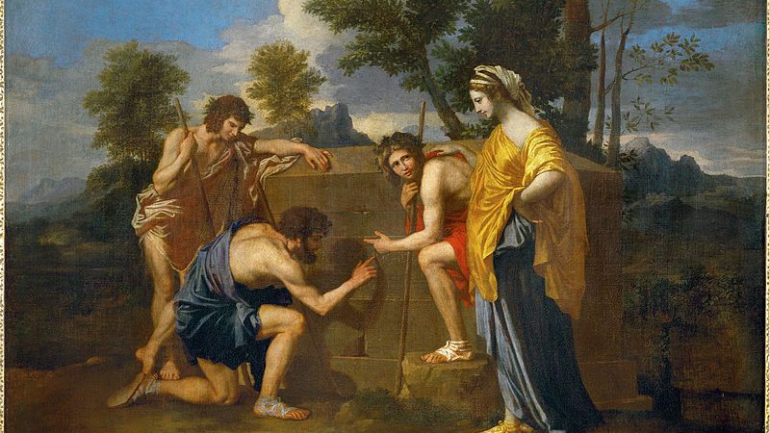Regarding the final chapter on Da Vinci, we finally get to talk about the Mona Lisa, and you might have been eagerly waiting for this moment. Today, I won’t elaborate on the artistic achievements of this painting; instead, I want to tell you that its charm comes more from its mystery.
Two Mona Lisas
- The Mona Lisa is one of Da Vinci’s most renowned portrait masterpieces. The figure in the painting sits elegantly with a subtle smile, often referred to as the “mysterious smile.” The French government keeps the painting in the Louvre in Paris for public viewing. Over the years, discussions around its artistic achievement, the identity of the subject, and the background of the painting have continued to captivate people. In terms of artistic value, Mona Lisa is simply one of Da Vinci’s excellent works, but with the accumulation of countless bizarre stories, its value has been infinitely magnified, making it an irreplaceable masterpiece today.
- One of the greatest controversies surrounding the Mona Lisa is whether the subject of the painting actually existed. After years of research, it can now be confirmed that she did. In 2006, a scholar discovered a book by the ancient Roman poet Virgil in a library in Germany. Inside the book, a person who had read it wrote a line that said, “This section is as well-written as the portrait Da Vinci painted of Mona Lisa.” The date of this inscription was roughly around 1503, meaning the person likely saw Da Vinci working on the painting, confirming both the time frame and the identity of the model.
- Further evidence supporting the existence of Mona Lisa comes from two official documents from Florence. One document, found in the Florence archive, contains burial records that clearly describe Mona Lisa’s funeral. Another document is a housing contract showing that Da Vinci’s father rented a house to Mona Lisa’s husband. These documents confirm that Mona Lisa was a real person, not, as some had speculated, Da Vinci’s self-portrait or another subject.
- It turns out that Da Vinci painted two Mona Lisas. Raphael, the youngest of the “Three Giants of the Renaissance,” created a sketch based on Mona Lisa, a monochrome charcoal drawing. In this sketch, we can clearly see a significant difference in the figure’s appearance, and there are two Roman columns beside the figure. Moreover, Vasari, a famous biographer from the Renaissance period, included Mona Lisa in his book Lives of the Artists, where he described the painting as having Roman columns and eyebrows, which are both absent in the Mona Lisa at the Louvre.
- The idea that Da Vinci painted two Mona Lisas also makes more sense chronologically. He began the first one around 1503, and when he died in 1519, he still had it with him, though it was unfinished. A span of over ten years would be unlikely, so it can be deduced that Da Vinci created the first Mona Lisa around 1503, which included eyebrows and Roman columns. Before his death in 1519, Da Vinci created the second Mona Lisa, which is now displayed in the Louvre.
- Many scholars have dedicated their lives to finding the first Mona Lisa. Over the years, two versions of the painting have come closest to matching the description. One legend claimed that a wealthy businessman in Singapore bought the first Mona Lisa, which matched both Raphael and Vasari’s descriptions and resembled the Louvre painting, though it couldn’t be fully verified. Another legend stated that Russia had found the first Mona Lisa, but after technical analysis, it was determined that the pigments did not match Da Vinci’s era, so it was considered a fake.
- Ultimately, researchers discovered that the first Mona Lisa was hidden beneath the second one at the Louvre. Following the advice of a French physicist, advanced photographic technology was used to scan the Mona Lisa at the Louvre, and to everyone’s surprise, the first Mona Lisa was found beneath it.
- The first Mona Lisa perfectly matches the evidence: eyebrows, Roman columns, a similar appearance, and a youthful look that aligns with the time gap between the two paintings. Moreover, the gaze and posture in the portrait are more consistent with the common practices of commissioned portraits during the Renaissance. There’s even an ironclad piece of evidence: a specialist in Renaissance clothing identified Da Vinci’s signature at the joint of two different fabrics on Mona Lisa’s dress.
- Thanks to the relentless efforts of researchers, many mysteries have been unraveled, but there are still some that remain unsolved. The Mona Lisa was a commissioned portrait, and upon completion, it should have been handed over to the commissioner. However, Da Vinci kept it with him and even added a second version. Why did he do this? It’s a question that may never be answered.

Da Vinci – Mona Lisa, housed in the Louvre in Paris, is his second Mona Lisa

Raphael – Mona Lisa Sketch

The Mona Lisa owned by a Singaporean businessman

The Mona Lisa stored in Russia, later determined to be a fake after pigment analysis showed it didn’t match Da Vinci’s era

The first Mona Lisa hidden behind the second Mona Lisa at the Louvre, restored through computer technology
Tips for Visiting the Mona Lisa at the Louvre
If you ever visit the Louvre and want to see the Mona Lisa, don’t expect to be able to stop and enjoy it leisurely, as there are always countless visitors waiting to view this masterpiece.
While you’re in line, consider changing your perspective and take a look at another painting across from the Mona Lisa — The Wedding Feast at Cana by Paolo Veronese. It is the largest painting in the entire Louvre, rich in detail, and equally valuable in terms of artistic merit.

